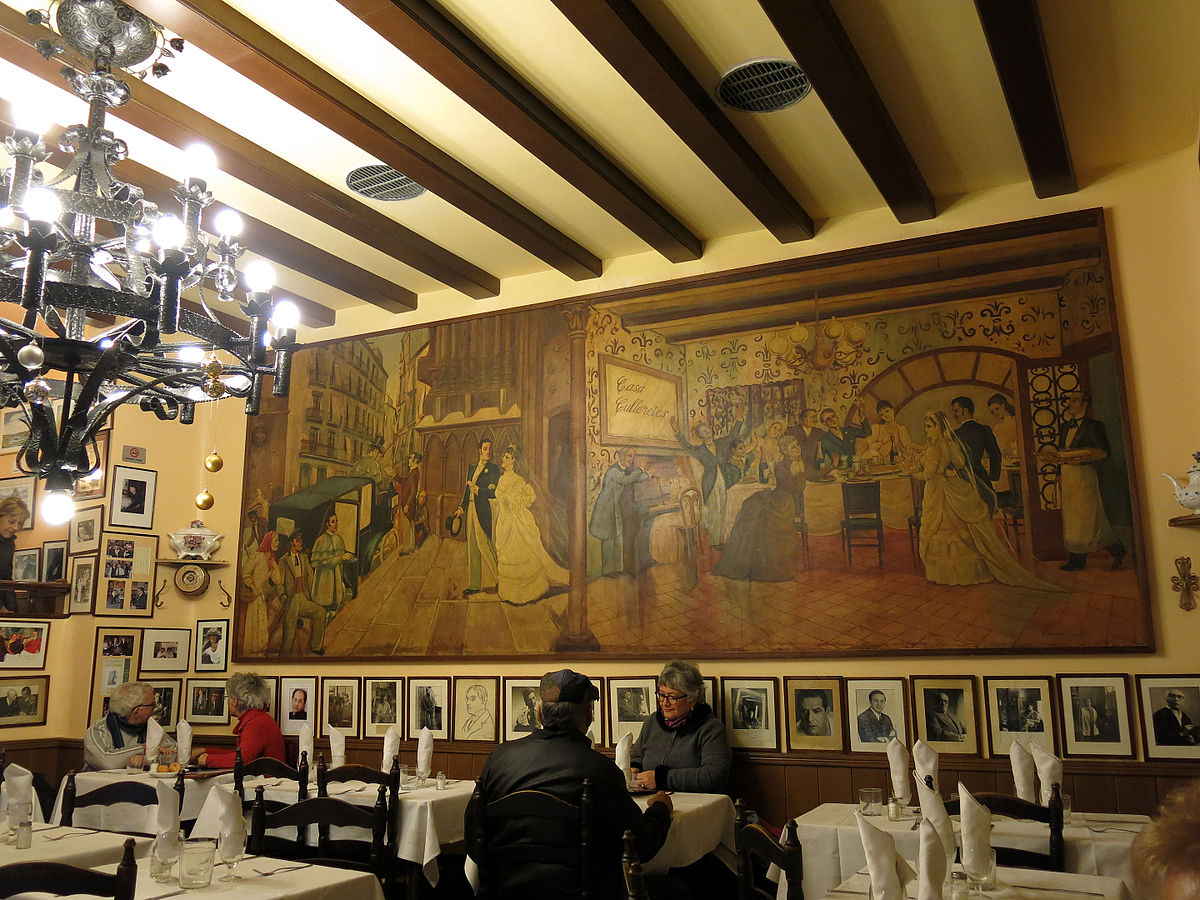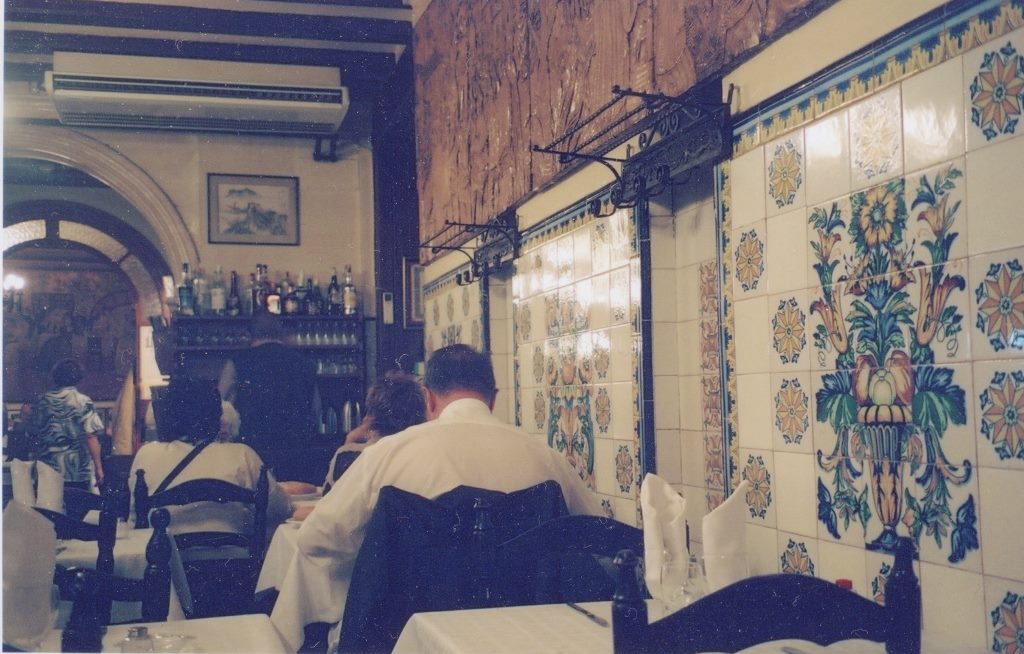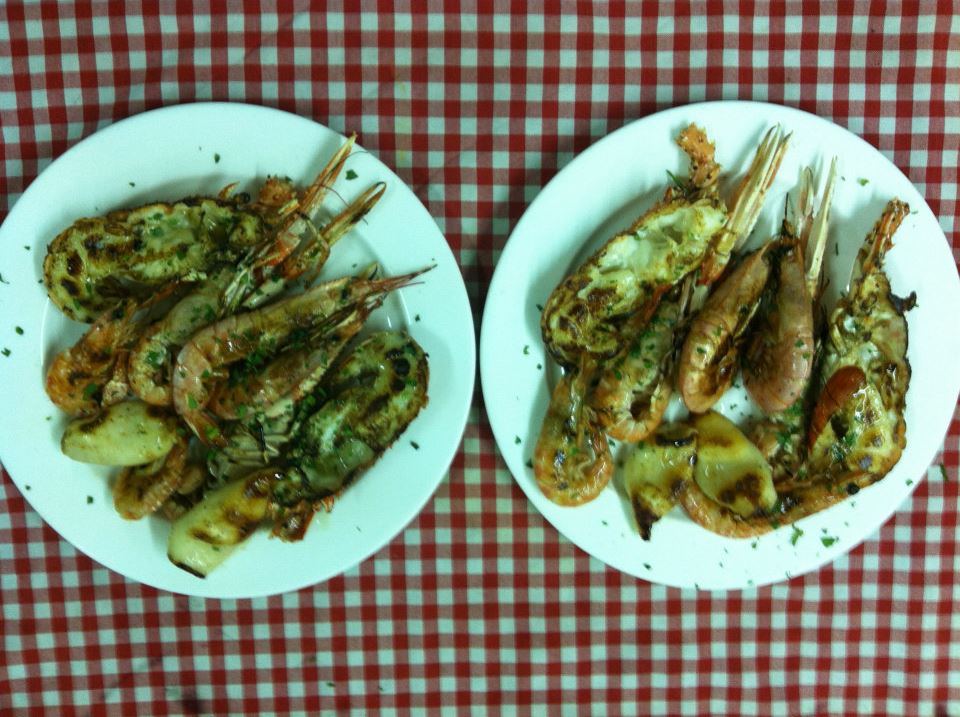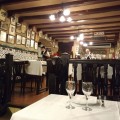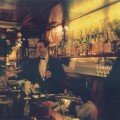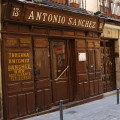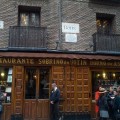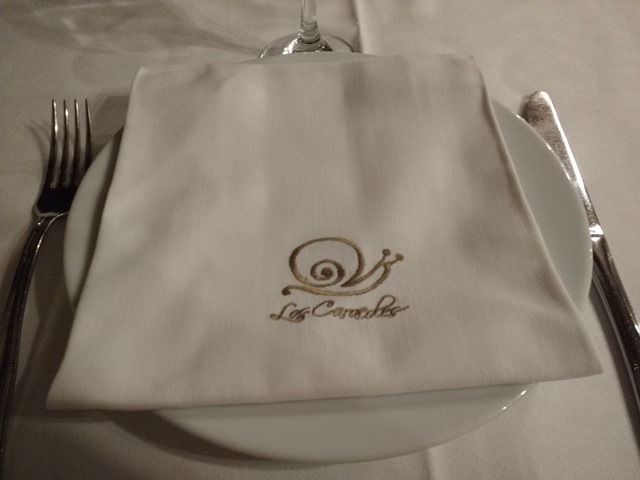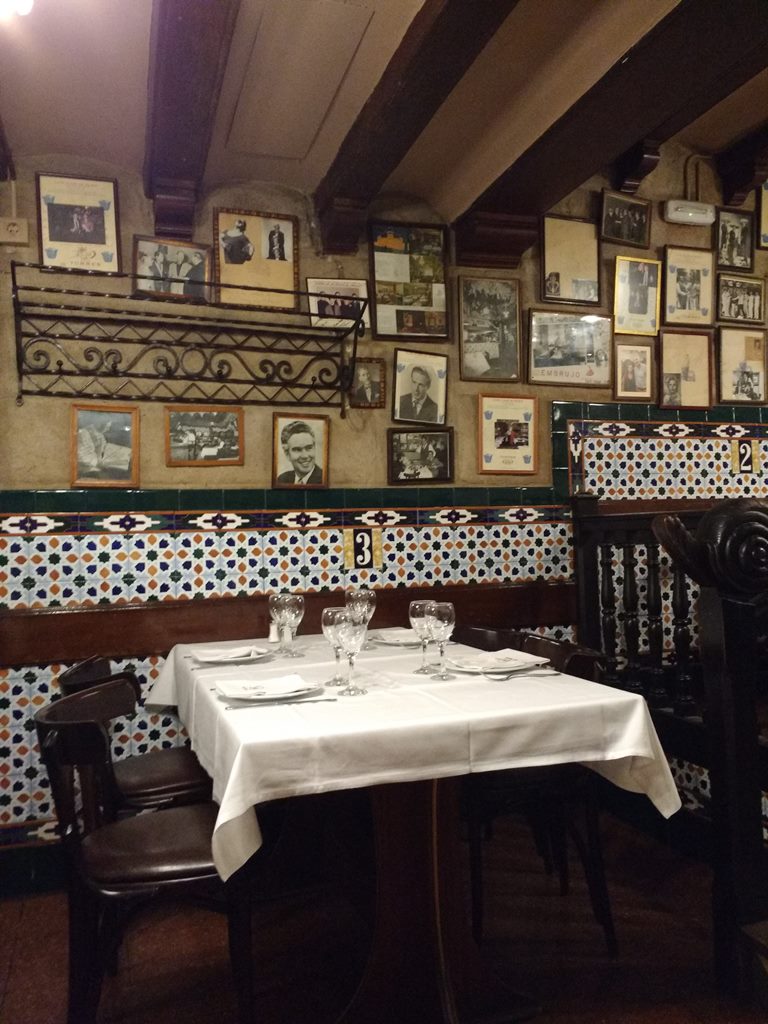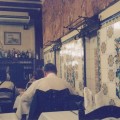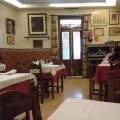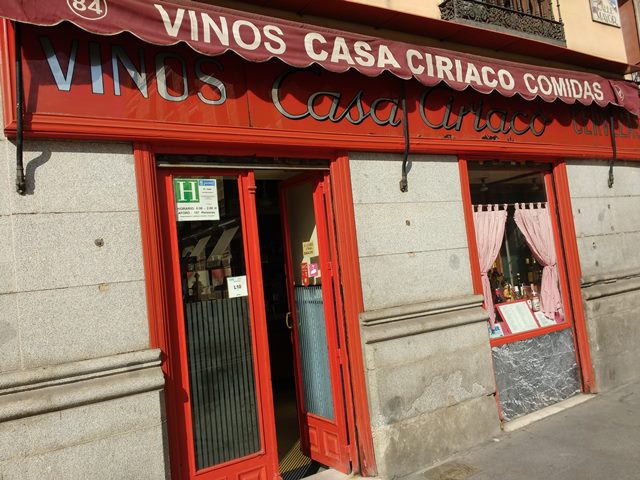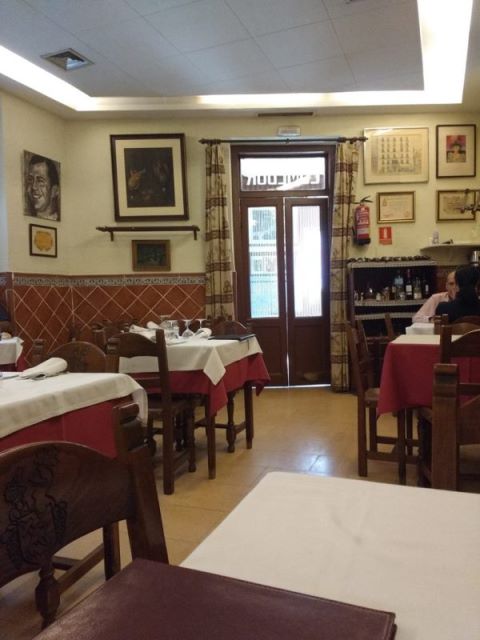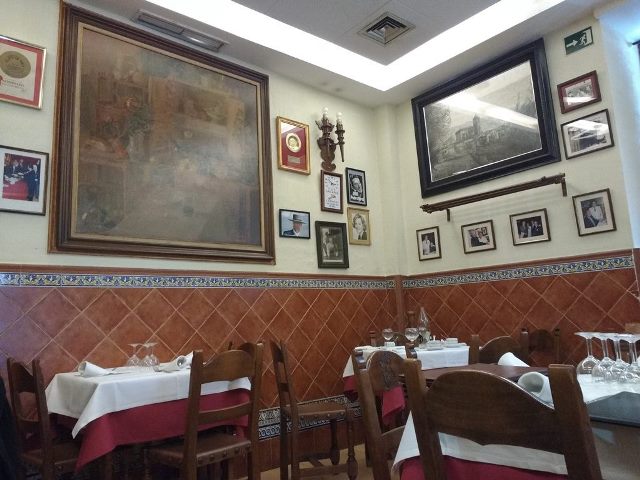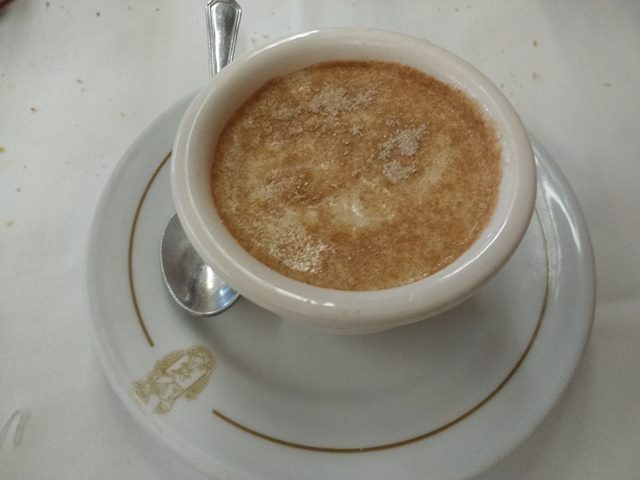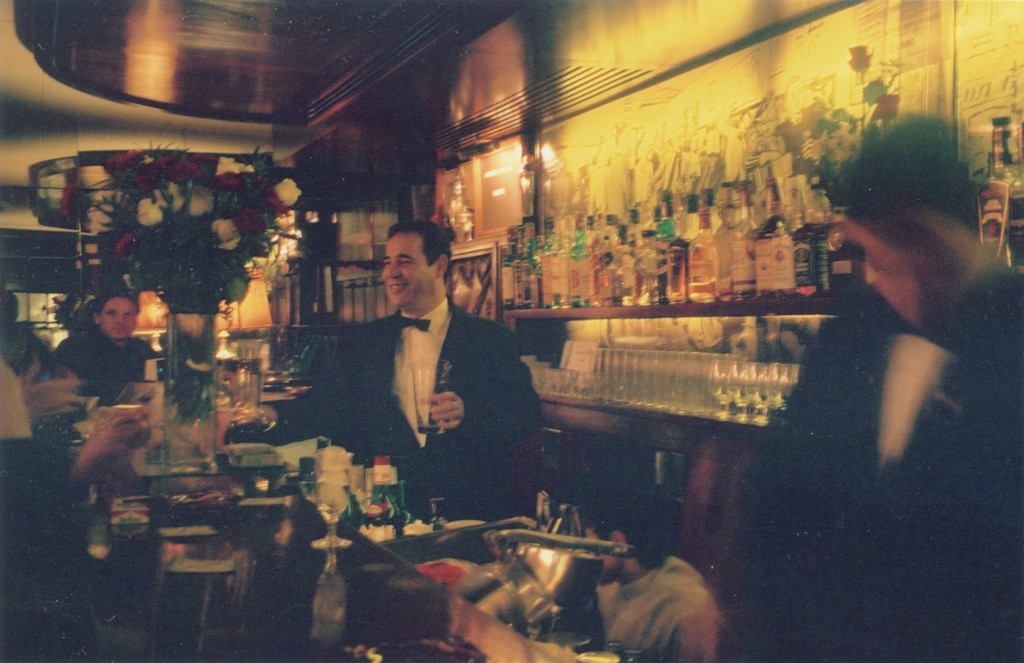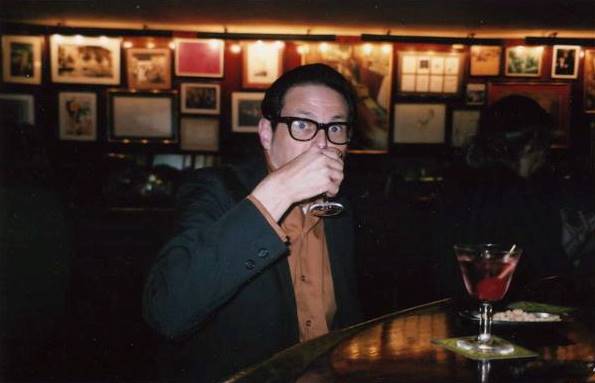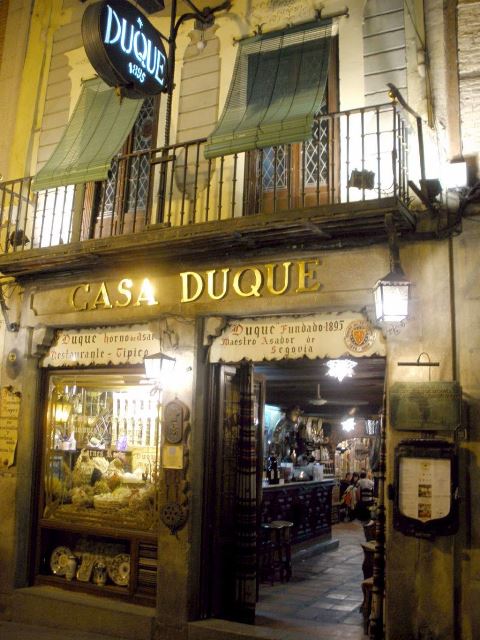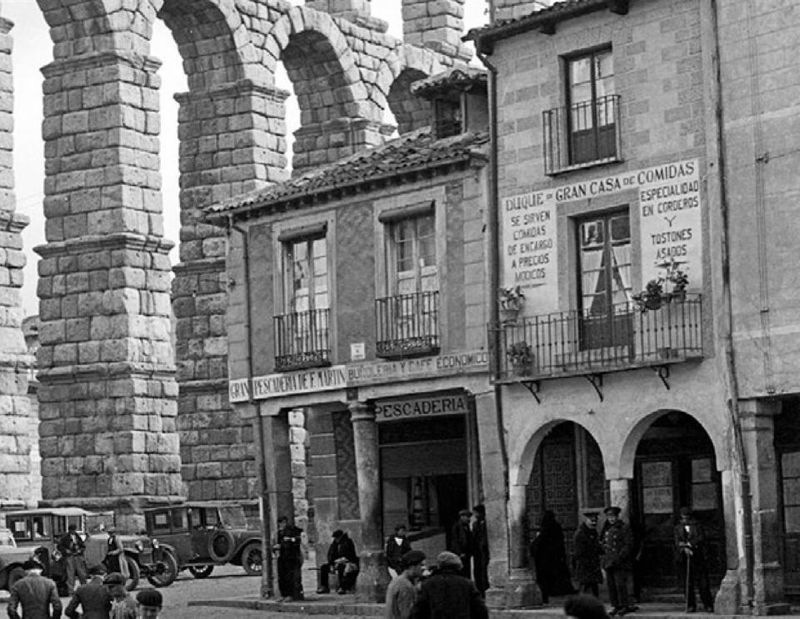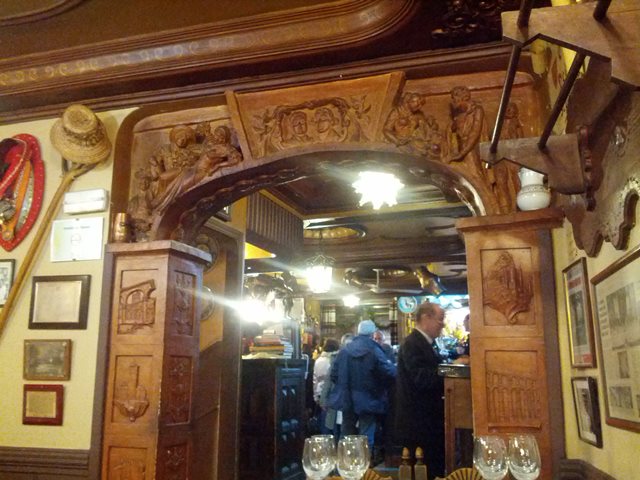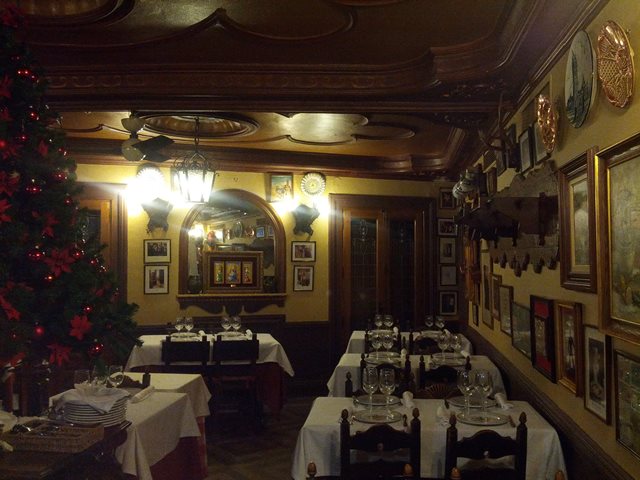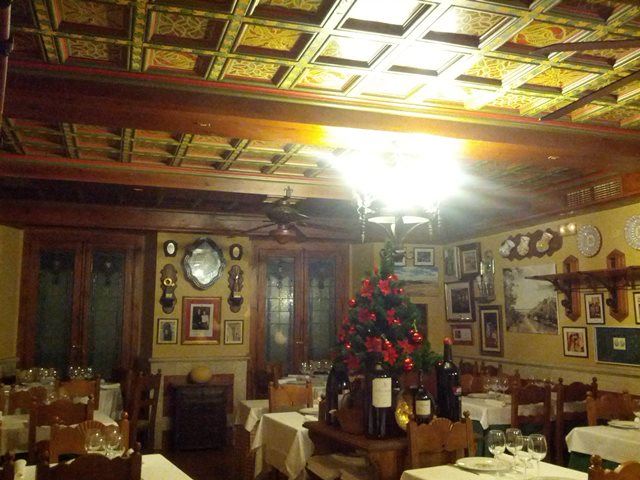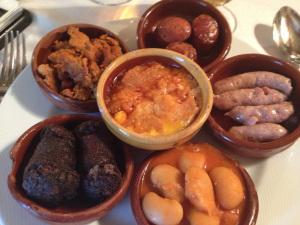Last year we visited Spain’s oldest restaurant, Sobrina de Botin. Today we are going to Spain’s second oldest restaurant (also Catalonia’s oldest restaurant), which I went to in 2004.
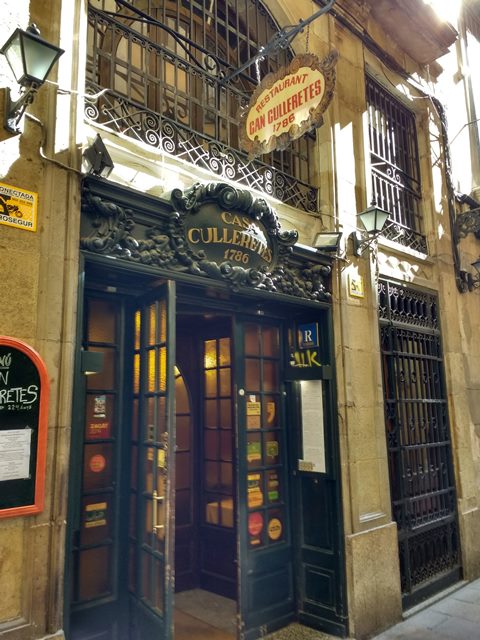
photo by Dean Curtis, 2015
Can Culleretes (basically “House of Spoons” in Catalan) in the Gothic Quarter of Barcelona started out in 1786 as a dessert café (which is the most likely source of its name) serving crema catalana, chocolate, puddings, and horchata (tigernuts, water, and sugar). In the late 19th century Tito Regás purchased it and converted it to a restaurant. For the restaurant’s decor he had three large murals painted by Francesc Tey, hung large iron chandeliers, and hired famous Catalan ceramicist Xavier Nogués to create decorative panels. The result is a beautiful and restful space, perfect for a leisurely meal. In my opinion, too many new restaurants in Barcelona go for minimalist, sleek decor, which feels cold and boring. I prefer a warm, classic restaurant like Can Culleretes with a lot to look at.

ceramic panels by Xavier Nogués – photo by Enfo – Own work, CC BY-SA 4.0, https://commons.wikimedia.org/w/index.php?curid=35648911
In the middle of the 20th century Sussi Manubens and Siscu Agut took over the restaurant and still run it (with their children and grandchildren’s help). On the walls hang many photos of famous Catalan matadors, musicians, artists, politicians, and journalists who have visited the restaurant since the Manubens and Agut families took over.
The menu is traditional Catalan cuisine. Specialties include pica-pica, a three course meal of steamed shellfish, fried seafood, and a grilled seafood platter, cassolettes de guisats (rich meat stews) such as civet de senglar (wild boar stew with onions) and perdiu a la caçadora (stewed partridge), botifarra amb seques (pork sausage with white beans), and escudella (Catalan soup).
The restaurant takes pride in their hand-made desserts and I recommend trying their menu del dia luncheon, only €17.50 for three courses (starter, main, dessert).
Can Culleretes
Carrer d’en Quintana, 5, 08002 Barcelona, Spain
Phone: +34 933 17 30 22
Open Tue-Sat 1:30pm-4:00pm, 9:00pm-11:00pm, Sun 1:30pm-4:00pm, closed Monday

